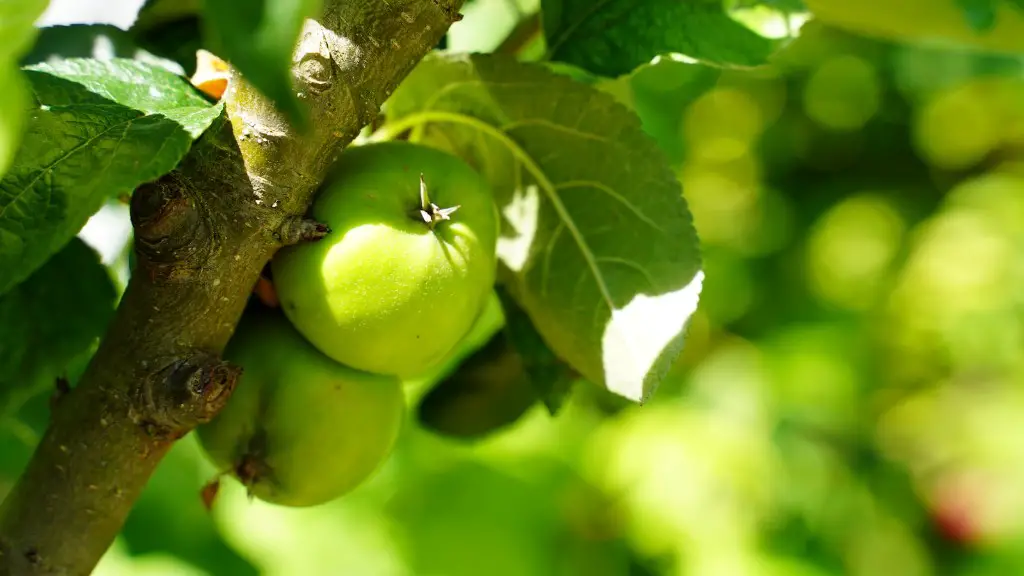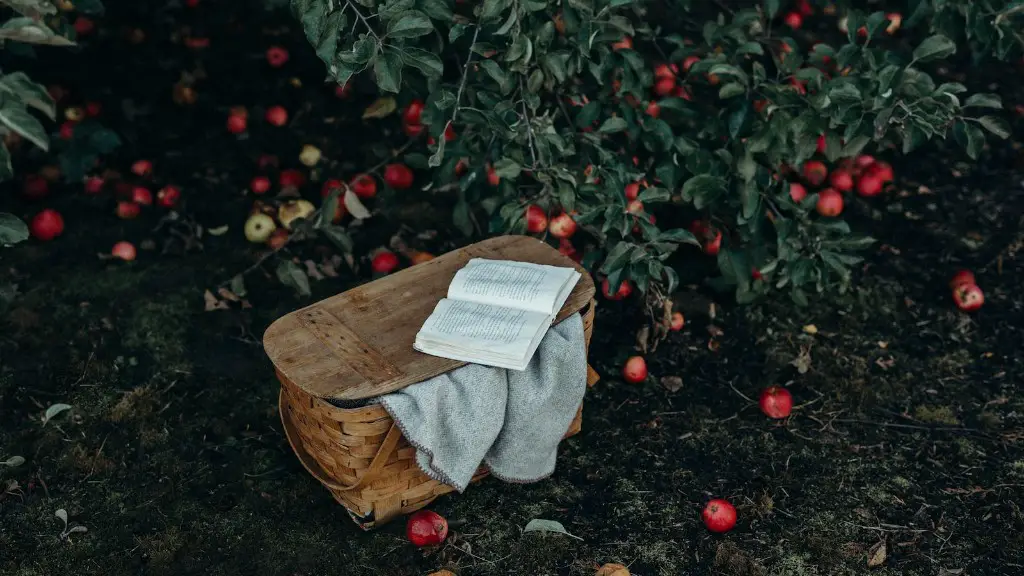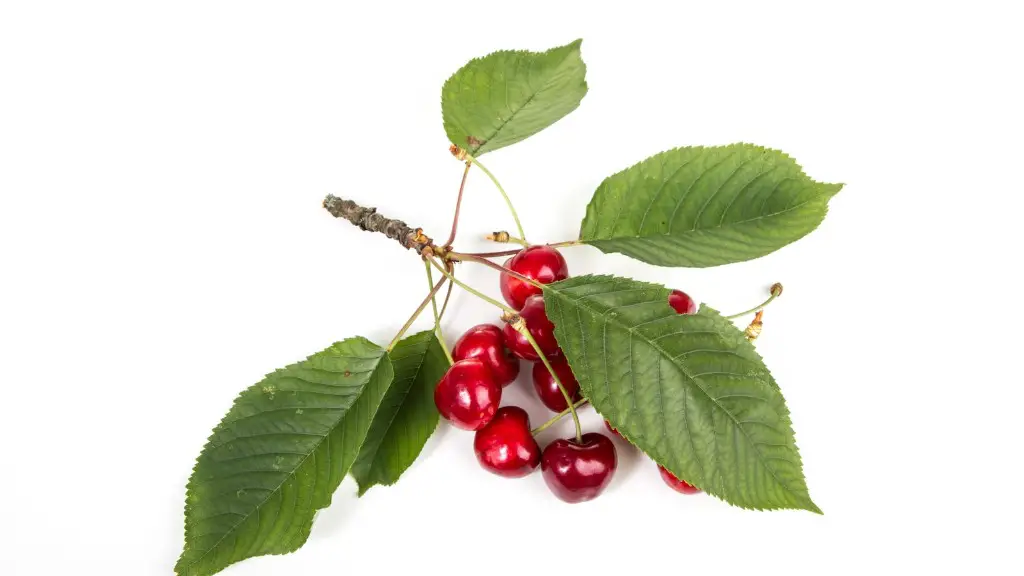The turning of the leaves to brown is a normal stage in the growth of an apple tree. It is often caused by an increased exposure to, or decrease in, light. The leaves may turn brown as a result of excessive heat, too little water, or too much water. These all can affect the tree, reducing its ability to photosynthesize, and causing the foliage to go brown. But there are also other considerations that may be affecting the health of your fruit tree.
The presence of pests, such as aphids and mites, can cause the leaves of an apple tree to go brown. They feed on sap from the leaves and eventually the foliage dies from the stress of the infestation. In addition, fungal diseases can also cause the foliage to brown at the edges. Left untreated, these diseases can cause the entire tree to die.
Nutrient deficiencies and chemical imbalances may also be causing leaf browning. An overabundance of nitrogen can lead to chlorosis, where the leaves turn yellow, then brown, and eventually drop off. A lack of phosphorus can cause foliage to drop prematurely and can weaken the entire tree. Proper fertilization and soil management can help prevent these issues.
Finally, temperature extremes can also cause foliage to turn brown. If temperatures are too cold, the foliage can die and fall off the tree. Likewise, if temperatures are too warm, the tree may become stressed, causing the foliage to turn brown.
Soil Factors
The soil is the foundation of any Apple tree’s growth, so it’s important to make sure it is properly maintained. Improper soil drainage and too much or too little of the wrong kind of nutrients can both lead to leaf browning. Make sure to check for sufficient drainage, as standing water can cause the roots to rot within the soil, and prevent them from accessing the water or nutrients they need. Additionally, an improper balance of nutrients can cause a tree’s leaves to brown.
It is important to test the soil to determine what type of balance of nutrients it needs, and then supplement it accordingly. Testing the pH levels of the soil can help you understand how acidic or alkaline it is, and make sure your tree is getting the nutrients it needs. Increasing the organic content of the soil, can help ensure that the Apple tree’s leaves don’t turn brown.
Furthermore, it is important to make sure the tree has adequate water. If the soil is too dry, then the leaves can start to brown; if it is too wet, then the roots can start to rot. This is another reason why soil drainage is so important.
Tree Care
When caring for your Apple tree, you must pay attention to its needs to help ensure it is healthy. Pruning your tree regularly can help ensure that it is not overburdened by old or dead branches, and give the tree the opportunity to focus its resources on healthier branches. Proper watering of the tree, during periods of extended dryness, can likewise keep the tree healthy.
Additionally, pest and disease control can help reduce the risk of your tree becoming sick and seeing its leaves turn brown. Check for pests or signs of disease, such as yellowing or browning of the leaves, and take appropriate measures should it be necessary. Applying the appropriate fertilizers, using natural organic fertilizers if possible, can help provide the nutrients the tree needs to remain healthy.
Climate Considerations
The extreme temperatures of winter and summer can both cause problems for your Apple tree if it is not adapted to the climate you are in. A tree’s leaves can suffer from too much or too little water or light in either of these seasons. Additionally, cold drafts or snow can cause frost damage, resulting in the leaves turning brown.
To keep your Apple tree healthy, make sure to give it appropriate winter coverage by wrapping it in an appropriate amount of burlap, and provide it with sufficient nutrients to help it through the winter season. Additionally, when temperatures get too high during the summer, adding some shade to your tree can help prevent leaf browning due to heat stress.
Harvest Treatment
Finally, one additional factor can be the harvest of your apples. If too many apples are removed from the tree all at once, the tree can become unbalanced in its allocation of resources, leading to leaves turning brown. Additionally, pick only what you need from your tree, as too much harvesting can likewise cause problems for its health.
Overall, leaf browning on your Apple tree could be the result of several different factors. Make sure to test the soil for proper nutrient balance and pH, practice proper tree care, account for climate concerns, and pay attention to where and how much of the harvest is being taken from your tree. Doing so will help ensure that your Apple tree remains healthy, and its leaves remain green.



